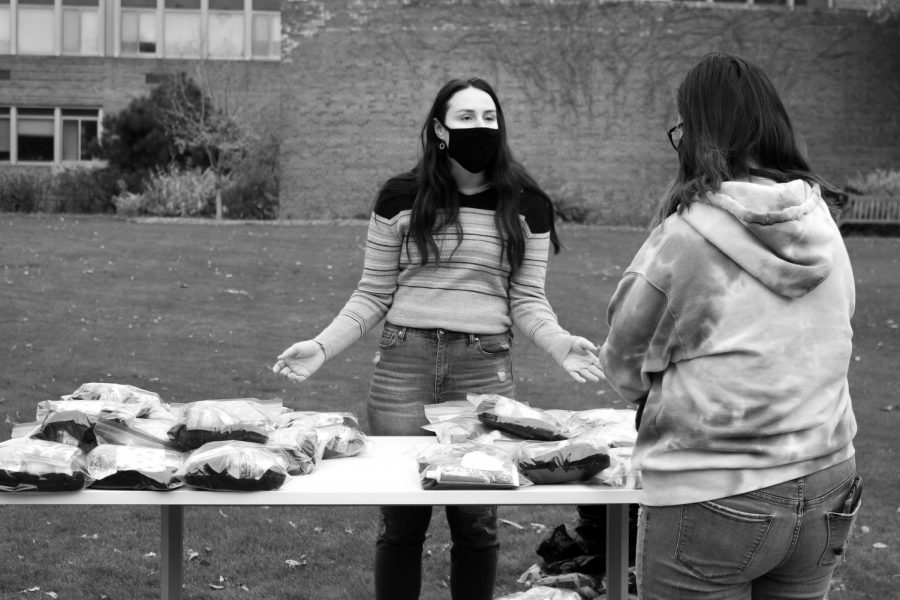Not charity, symbiosis
Discussing the hope of financial aid following mutual aid events on campus.
Ali Kimball
HUPB and HORC previously hosted a mutual aid event in late October. Junior Amanda Libby explains the importance of mutual aid to a fellow student.
November 25, 2020
The coronavirus pandemic has created a global rut. Over two hundred thousand Americans have passed away after contracting the virus. The “Employment Situation Summary” released by the U.S. Bureau of Labor Statistics counted 1.8 million temporarily laid off workers as of October. An overwhelming amount of new applicants seeking unemployment benefits has overwhelmed the program and resulted in the freezing of funds. A stimulus check was distributed five months ago and congress has not decided when the next one will come.
Socially marginalized people continue to face insecurity and injustice. Kyle Rittenhouse, a homicide suspect who shot and killed Anthony Huber and Joseph Rosenbaum during the Jacob Blake protests in Kenosha, WI, was released on Friday on bail of $2 million. Derek Chauvin, the Minneapolis police officer charged with the murder of George Floyd last May, was released on bail of $1 million last month. In the days following his release, dozens of people living in tents at PowderHorn Park were evacuated. Many of their personal items were discarded and a safe alternative shelter was not provided to all of them.
While struggles and injustices continue to burden communities, hope persists. Over the summer, several demonstrations in remembrance of Floyd took place all over the Twin Cities. Communities organized and collaborated to uplift their neighbors, with intentional focus on the socially marginalized. It was during these difficult times a mutual aid movement began in St. Paul and Minneapolis. The “Twin Cities Mutual Aid Project” created a website and interactive map listing four hundred sites where people could donate, volunteer and seek assistance. There are several Facebook Pages where people post their needs and the public responds.
Mutual aid has a diverse history in America. Black Americans navigated racial segregation in the United States through mutual aid. Immigrants also use mutual aid to maintain the wellbeing of their community.
Mutualism exists everywhere in the natural world. Take the symbiotic relationship of the oxpecker and rhinoceros for example. In this interaction, the oxpecker consumes the parasites on the rhino’s back, and the rhino provides the bird with a safe space to do so. Both participants benefit from the relationship and serve one another in their own way. Humans replicate this ecological interaction in a multitude of ways. Simple things like doing laundry at a friend or relative’s home and bringing extra detergent for their load is mutualism.
Aid is a voluntary act of assistance. One can aid financially, materially, with time or compassion.
“That’s what is transformative about mutual aid. The core is caring about people and making connections,” said Emma Harrington, the Collaboration Programmer for the Hamline University Programming Board (HUPB). Harrington coordinated the November mutual aid month event that targeted first year students and anyone else looking for a way to help others through donations. The donation box is located at the Anderson Front Desk. Harrington is open to coordinating more mutual aid events in the future.
In the meantime, take an interest in the community. Explore symbiotic relationships, whether it’s shoveling a senior’s driveway or helping a younger friend or relative with school work. A community is only as good as its citizens.

